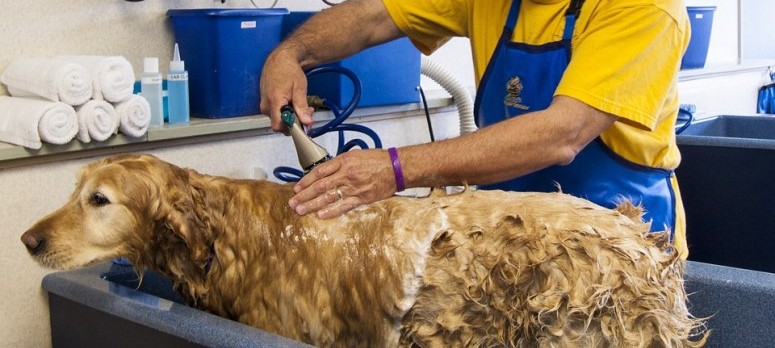Believe it or not, there isn’t much out there on the history of pet grooming! For something that has become a routine in the health of our pets, it’s a bit odd how the history of dog grooming is only available in small vague blips.
I took it upon myself to do a little research on the topic, and give a little insight into where and how grooming salons developed.
The Greeks
If you’re familiar with Greek Mythology, then the presence of dogs in their culture is not surprising. After all, Hades had a three headed one named Cerberus! And apparently, the first known instances of grooming a pooch comes from ancient Greece! The forerunner to the poodle—the water dog—was often styled like little lions. The style can be seen mimicked in the medieval period. Unfortunately, there isn’t much information about Ancient Greek Groomers, but the commonly referenced date is about 30 AD.
Elizabethan Style
The Renaissance shows a surge in courtly pet grooming, and in Queen Elizabeth I’s court a well trimmed dog was important. Wood carvings and paintings show women holding their pooches while groomers shear away scruffy hair! Dogs were often a popular companion in portraits—a symbol of status—and would be painted wearing similar neck ruffles and jewels as their humans. The look and presentation of a courtly dog began to become a very prominent feature in Elizabethan England, and Europe. They were even shown as family members, and special friends in art, which may be why we see a rise of popularity in the lap dog.
Yankee Poodle
Ever hear of Yankee Doodle Dandy? Even though the jingle is often sang patriotically with a mention of George Washington, the song originally was a play on the ridiculous Macaroni fashion of the 18th century. Big wigs, lace, powder, and over all “foppishness” was all the rage, and During the 18th century in France, the dog of fashion was the poodle. Because the dog was named the official dog in King Louis XV’s era, it was very important to keep the dogs in style. The first dog grooming shops began to pop up. The groomers were known as Demoiselles, and catered specifically to dogs of fashion in grand estates and palaces. Often, a poodle’s hair was styled in the same look as their owner’s wigs!
Barking Barbershops of the 1940s
The most similar to modern day grooming salons was the early dog barbershop of the ’40s. A far cry from the royal poodle-primpers of 18th century France, 1940s groomers had a basic set up where people could bring their pets for a wash and a trim. Shave and a hair cut! Two bits.
The art of the salon wasn’t perfected until many years later, of course. The barbershops struggled without electric razors, and in the book From Problems to Profits by Madeline Bright, these early shops are described as sweat shops for barbers and barkers alike. With the development of better tools, the trade began to to grow, and during the era of the American Dream the household pup was once again a staple of status and leisure! So, it makes sense that the salons began to treat them like the prince and princesses they are. Now, a doggy spa day is just the thing to show just how much you love your pup!
Believe it or not, a lot of this information is from a book by Madeline Bright Ogle, From Problems to Profits. I’ve taken the highlights of historical dog grooming and expanded on them, but if you’re interested go ahead and check her book out.





